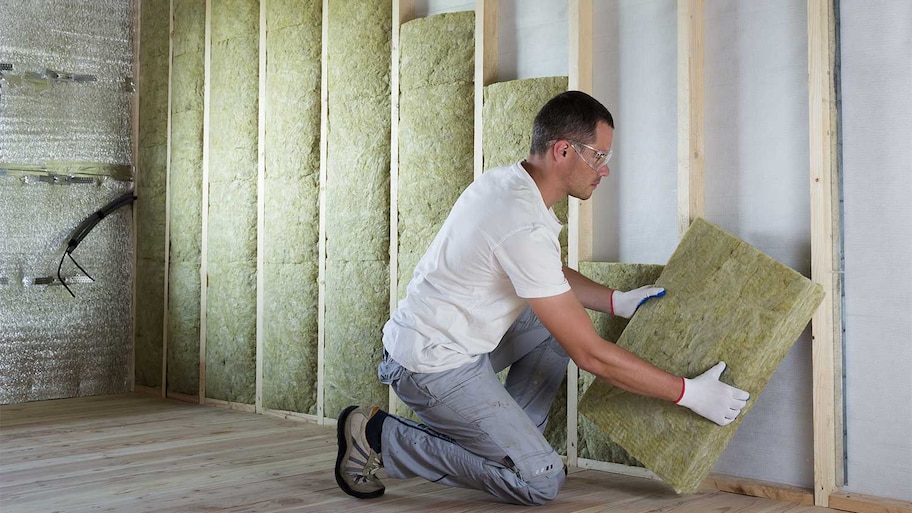Furnace Efficiency Ratings: What You Need to Know
If you're still creeping into the basement to relight the pilot, it may be time to check out your furnace's AFUE rating
Highlights
An AFUE rating denotes the percentage of fuel your furnace converts into energy.
If you have an older furnace, it may be time for an upgrade to reach a higher AFUE.
Standard AFUE ratings today are around 83%.
High-efficiency furnaces receive a rating higher than 90%.
Adjoining components of your HVAC system also affect its efficiency.
As pumpkins appear on doorsteps and cozy sweaters come out of storage, the dread of your heating bill can start to rise as well. The Annual Fuel Utilization Efficiency rating on your furnace—also known as AFUE—could be the key to understanding your furnace's lifetime costs and ensuring your home is as efficient as possible. Here's all you need to know about today's AFUE rating system and how the number may inform your next HVAC upgrade.
What Is an AFUE Furnace Rating?
Back in 1987, the U.S. Department of Energy established national standards to ensure the efficiency of major household appliances. The National Appliance and Energy Conservation Act included the advent of AFUE ratings for furnaces.
Your furnace’s AFUE number, displayed as a percentage, likely falls anywhere between 56% and 100%, and the higher the number, the more efficient the furnace. You'll find this number on the front faceplate of your furnace or by looking up the unit’s serial number.
Understanding the Numbers
The AFUE rating represents how much of the fuel used in your furnace converts into energy and how much gets lost to the wind—sometimes literally. A furnace with an 85% AFUE rating converts 85% of the fuel into heat and loses 15% to the combustion process.
Misdirected heat, for example, may head right up the chimney instead of your home, warming the birds on your roof, but not your living room. In financial terms, this means you lose about 15 cents on the dollar when you pay for your heating bill—not exactly ideal.
Here's an important note: The AFUE rating does not include energy lost to poor insulation, ductwork, drafty windows, or a chilly attic. The Energy Department suspects up to 35% can be lost to these factors on top of the AFUE number, so we'll jump into them a bit later.
AFUE Regulations
If your old trusty furnace from the ’70s is still chugging along—and requires you to relight the pilot every time the wind blows—it may have an AFUE rating as low as 56%. This means you're losing up to 44% just in the heating process.
The National Appliance Energy Conservation Act of 1987 set the AFUE standard to 78% through the start of 2015 and then upped it to 80% afterward. In order to earn the coveted Energy Star rating, a furnace must exceed 90% AFUE. Nowadays, standard furnaces fall in the low to mid-80s.
AFUE Ratings Based on Furnace Type
There is no one-size-fits-all heating system for every home. The Energy Department even recommends different ratings for each part of the country depending on the climate and the type of fuel used in your system.
Overall, furnace efficiency varies based on the:
Fossil fuel or electricity used
Size of the unit
Ignition style
Blower style
Exhaust style
Type of heat exchanger
Sealed or unsealed combustion system
While you'll find endless styles and related venting options, you can get a sense of what you're dealing with in your home through the following categories.
Low-Efficiency Furnaces
Older furnaces typically fall into the 56% to 70% AFUE range, according to the Energy Department. You'll spot a continuous pilot light in these models, and they are often known as single-stage furnaces. In other words, they turn on when it's cold and turn off when your house warms up to the right temperature.
A simple exhaust system will depend on the natural draft of your house instead of fans and you typically won't be able to adjust the speed of the blower.
Mid-Efficiency Furnaces
Standard or mid-efficiency furnaces include the majority of systems today, ranging between 80% and 83% AFUE. These conventional gas furnaces cost between $900 and $1,800, a much lower upfront price tag compared to high-efficiency models.
These systems may include an electric ignition or complex exhaust fans to direct heat and run smaller overall. You'll find both single-stage and two-stage designs. Two-stage furnaces offer more heating control instead of simply switching between on and off.
High-Efficiency Furnaces
If your furnace earned the Energy Star label, this means it boasts a 90% to 98.5% AFUE rating. A sealed combustion chamber is a key factor in these systems, ensuring the warm air stays in your home and the dangerous exhaust goes outside. The furnace may include a more advanced heat exchanger, ignition, variable blower, and two-stage or multi-stage heating design.
While these designs are not hard to find, they can cost between $3,000 and $4,000.
Electric Furnaces
The Energy Department notes that all-electric furnaces often feature some of the highest AFUE ratings on the market, but don't jump at this option too quickly. The high cost of electricity in many regions of the country could outweigh its benefits, even if the price of an electric heater is lower upfront.
Factors That Affect AFUE Ratings

A well-insulated home and an efficient furnace go hand-in-hand. If you're buying a new furnace and are on the hunt for the right design, you may want to start by upgrading your home itself first. The better it holds in heat, the smaller the furnace you'll need to keep it toasty.
Factors that directly affect the efficiency outside of AFUE include:
Attic and wall insulation
Energy-efficient windows and doors
Updated ductwork or chimney lining
Thermostat upgrade
Sealed entryways around pipes
Well-placed and maintained radiators
Clean furnace filters
Direct indoor sunlight
What AFUE Rating Should I Look For?
Most standard furnaces today have an AFUE rating in the mid- to low-80s, which is pretty good, but 90% or more is better for your energy bill and the environment. The Energy Department notes that upgrading your furnace from 56% to 90% AFUE can save between 1.5 and 2.5 tons of carbon dioxide annually.
So how do you know if the larger AFUE rating is worth the investment? The Energy Department has done most of the math for us. This helpful chart breaks down how much money each furnace costs to run over the course of one year and 20 years. Keep in mind that ratings differ between the northern and southern halves of the country.
You don't need to be a heating expert to choose the right furnace and HVAC system for your home, but wrapping your head around these basics can help you make the right purchase. Chat with your local HVAC team to brainstorm the best option for your space and how to cut down both utility bills and your carbon footprint.
Sara Coleman contributed to this article.
Frequently Asked Questions
The minimum standard for a good efficiency rating for a furnace is 78%. An AFUE rating above 90% means a furnace has a high efficiency rating. AFUEs between 80% and 89% are considered a mid-tier efficiency rating for furnaces. You can find your furnace’s efficiency rating on the bright yellow tag located on the unit.
You can expect a furnace to last anywhere from 15 years to 30 years. The life span of a furnace depends on several factors, such as how well it’s been maintained and who the manufacturer is. Generally speaking, oil-fueled furnaces have the longest life spans, and gas-fueled furnaces tend to have the shorter ones.
